Telling Stories with Sound
 Free online Journalism Training course from News University, taught by the NY Times multimedia editor: Telling Stories with Sound.
Free online Journalism Training course from News University, taught by the NY Times multimedia editor: Telling Stories with Sound.
 Free online Journalism Training course from News University, taught by the NY Times multimedia editor: Telling Stories with Sound.
Free online Journalism Training course from News University, taught by the NY Times multimedia editor: Telling Stories with Sound.
 I’m kinda lucky to have
I’m kinda lucky to have
HeadRoom, the large net/mail headphone retailer, right in my hometown (Bozeman MT). When I need cans I just cruise by and buy whatever they recommend: they’re audiophile fanatics and listen critically to everything they sell.
In the field I use ear canal headphones (don’t call ’em “earbuds,” sez HR). They sound good, they seat well (i.e., don’t fall out), and they’re small, so you don’t look like a Martian when approaching folk outta-the-blue to interview them. I usually pay between $100 and $200 for a really good, but not top-o-line pair.
I used a Shure E4 with an Etymotic ER6 as backup. The Shure sounded better and had a thicker cord. I say “had” cuz I recently broke both (abuse), leaving me field phone-less.
So I swung by HeadRoom for new Shures, but Shure’s new E’s have much thinner cords. “Anything else as good?” asks I.
Guy pulls out the ![]() Ultimate Ears super.fi 5 Pro ($180). I buy sans listen; take ’em home and am impressed. For the first time I hear a decent bass response from ear-canals. People say both the Shure and Etymotics have good bass, but I never thot so, even when I had the in-ear seal as tight as a [fill in offensive simile here]. But these UE’s go low, likely cuz of their dual drivers, one just for bass. (Caveat: HR mentioned the crossover could be a prob as it occurs at in vocal mid-range, but probs for them are usually out of my range of perception.)
Ultimate Ears super.fi 5 Pro ($180). I buy sans listen; take ’em home and am impressed. For the first time I hear a decent bass response from ear-canals. People say both the Shure and Etymotics have good bass, but I never thot so, even when I had the in-ear seal as tight as a [fill in offensive simile here]. But these UE’s go low, likely cuz of their dual drivers, one just for bass. (Caveat: HR mentioned the crossover could be a prob as it occurs at in vocal mid-range, but probs for them are usually out of my range of perception.)
Bass is important not just for the funk-in-recordings but also for field recording, as most of the wind and plosive overdrives occur in the lower freqs — lower than most open-ear phones go. So you could be wrecking your recording and not know (hear) it.
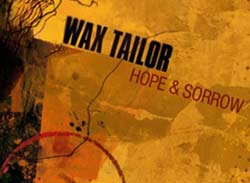 I’m abnormally attracted to spoken-word sampled music, by folk like Lemon Jelly, The Avalanches, The Books. Of that ilk are the filmclip-infested beats of Wax Tailor (JC Le Saoût, a French DJ and member/producer of early 90s rappers La Formule). I’ve been overplaying has last CD, Tales of the Forgotten Melodies. And will likely do the same with his latest Hope & Sorrow. Here’s a track from each…
I’m abnormally attracted to spoken-word sampled music, by folk like Lemon Jelly, The Avalanches, The Books. Of that ilk are the filmclip-infested beats of Wax Tailor (JC Le Saoût, a French DJ and member/producer of early 90s rappers La Formule). I’ve been overplaying has last CD, Tales of the Forgotten Melodies. And will likely do the same with his latest Hope & Sorrow. Here’s a track from each…
Wax Tailor “Que Sera” Tales of the Forgotten Melodies (2:44 mp3):
Wax Tailor “Once Upon A Past” Hope & Sorrow (4:47 mp3):
The Terminator calls Gateway (1:56 mp3):
Found at Some Assembly Required.
New York Times “N.Y.P.D. Sirens”:
When New York City police officers have to use their sirens, they have the option to mix and match a series of screeches and wails. Below are the sounds at their disposal as well and one more — the Rumbler — which may soon be added to their repertoire.
Mix and match ’em yoursel…
Hi-Lo:
Rumbler:
Fast:
More at NY Times.
Found by Sue Schardt.
 Feel like you’re going to hell? Why not try the audio-tour first: Radio Inferno Hörspiel nach Dantes Inferno in 34 Gesängen. Translated from the Nazi, er, I mean German, “hörspiel” means “ear-play.” “Radio Inferno” was a 1993 radio drama of Dante’s “Divine Comedy,” by artist Andreas Ammer with music by FM Einheit (of Einstürzende Neubauten). BBC DJ John Peel is “The Radio” (the narrator), and there’s guest appearances from Bootsy Collins and many others. All the tracks are posted (MP3s) at UBUWEB and at WFMU…
Feel like you’re going to hell? Why not try the audio-tour first: Radio Inferno Hörspiel nach Dantes Inferno in 34 Gesängen. Translated from the Nazi, er, I mean German, “hörspiel” means “ear-play.” “Radio Inferno” was a 1993 radio drama of Dante’s “Divine Comedy,” by artist Andreas Ammer with music by FM Einheit (of Einstürzende Neubauten). BBC DJ John Peel is “The Radio” (the narrator), and there’s guest appearances from Bootsy Collins and many others. All the tracks are posted (MP3s) at UBUWEB and at WFMU…
“Canto V” Radio Inferno:
“Canto VII” Radio Inferno:
From “Canto XVII” in the Third Circle of Hell: “Here beatnik Burroughs has to read his own books for all time.”
 Matt Payne’s grandpa 1) likes to catch smelt and 2) has a helluva voice: Nelson Hersey: Master Fisherman.
Matt Payne’s grandpa 1) likes to catch smelt and 2) has a helluva voice: Nelson Hersey: Master Fisherman.
(Matt’s a sampled musical vers is “Getchyer Long Johns On.”)
Just as we radio folk now often carry cameras, print and photo journalists are now lugging basic audio-recording gear out to cover stories. Apple’s Pro – Techniques site has an Audio in Rich Media section devoted to them. Their articles cover audio basics well, including “Telling Stories with Sound,” “Audio Gear for Rich Media,” and “Field Recording Techniques.”
Mark Twain’s The War Prayer, read by Peter Coyote, sound/mix by Jim McKee of EarWax, produced by Markos Kounalakis:
Found at WFMU’s BOTB.
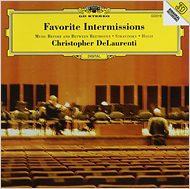 NY Times article, Favorite Intermissions:
NY Times article, Favorite Intermissions:
For seven years, Christopher DeLaurenti went to orchestral concerts wired, wearing a leather vest with microphones nestled in the shoulders and cables running down the back. Come intermission, when the audience wandered out, Mr. DeLaurenti perked up. The DeLaurenti concert going vest had microphones sewn into it.
He made his way toward the stage. With his MiniDisc recorder running, he secretly captured the random sounds that followed: woodwind noodles, honks of oboe reeds, the murmur of voices, the scraping of chairs.
“SF Variations†Favorite Intermissions:
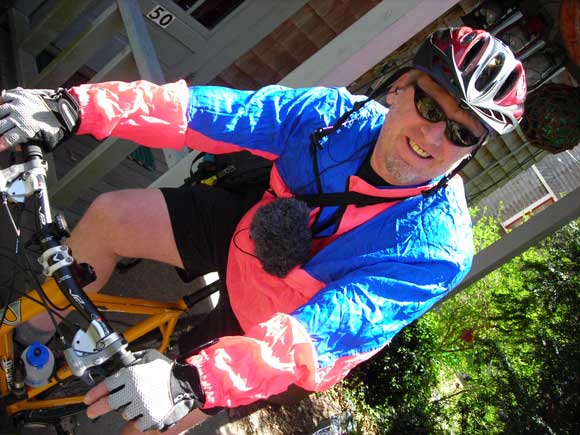
Took the new all-in-one HHB Flash Mic/Recorder (US$1K street) for a literal spin. Wrapped it in a Rycote full-ball wind-sock (that I use for my Shure VP-88), stuffed it inside the chest pocket of a shell-jacket (in above mic it’s that tribble sticking outta my torso), then pedaled about 30-miles, recording and babbling into it much of the way.
 The HHB is a good-sounding microphone with a high-quality digital recorder built right into the mic tube. It’s a mono omni dynamic mic. I rarely use dynamics cuz they just don’t sound as good as condensers (which have wider frequency response and greater signal level = better basses and highs = crispness and presence). But for a dynamic the HHB sounds pert-dern decent. Here’s a mic-ing-while-biking clip:
The HHB is a good-sounding microphone with a high-quality digital recorder built right into the mic tube. It’s a mono omni dynamic mic. I rarely use dynamics cuz they just don’t sound as good as condensers (which have wider frequency response and greater signal level = better basses and highs = crispness and presence). But for a dynamic the HHB sounds pert-dern decent. Here’s a mic-ing-while-biking clip:
You can hear it’s pretty good with handling and wind-noise (at least w/ sock on). You can see the mic-to-mouth distance in above pic and hear it’s picking up my voice and road sounds rather well.
Ease-of-use is where this thing really shines. It’s gotta 1GB flash memory card (non-removable) built in, which gives you 3+ hours of recordings (at 44.1KHz, 16bit mono .wav). If it’s on it’s in record-monitor mode. One-button starts the recording, and there’s a pre-record buffer that writes-to-disk the up-to-10sec. of audio before you hit record.
Batteries (2 AAs), which weren’t fresh when I statrted, lasted 4+hours. The headphone amp powered my Etymonic buds well — no trouble monitoring. The thing is really light-weight, but the mic housing and buttons feel rugged. The level meter screen is small but usable. The LCD display is quite readable, even in fairly strong outdoor-light, with usable indicaters of mic-lvel and battery-life. The bottom button/dial on the bottom turns it on and controls all the levels and myriad menu commands, which is a bit tedious; but if you set most everything before you go out it isn’t a prob. There’s a mini-USB jack (digi-camera style) on the bottom for uploading your soundfiles via computer. Didn’t use the filters (high & lo pass) or auto-level controls, so don’t know nada about how they perform.
In sum, this thing performed admirably in this difficult-to-record situation. So considering the parameters: an all-in-one light, rugged mic/recorder that sounds good, is simple to use, stores lotsa audio , and runs a long time on a set of batteries, HHB has done a really nice job. But as with all HHB products, you pay for their high-quality and innovation: the HHB Flash Mic’s about US$1K (street).
Cred: Borrowed the mic from Atlantic Public Media. Recording was for the new series Stories from the Heart of the Land. Thanks to Emily Botein for clip selection.
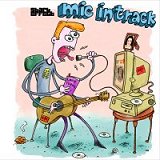 Stark Effect makes music sampling found-sound. The sound is found on other folks’ computers with the filename: “mic in track,” which is the title of his CD and free downloads. Try “Testing 1-2-3” (3:05):
Stark Effect makes music sampling found-sound. The sound is found on other folks’ computers with the filename: “mic in track,” which is the title of his CD and free downloads. Try “Testing 1-2-3” (3:05):
Sez Stark:
A “mic in track” is a recording made on a PC using MusicMatch Jukebox, a music utility packaged with many new PC’s that allows the user to record from the microphone input of the PC’s sound card and save the recording in mp3 format. The default filename is “mic in track” followed by a number.
If that user also happens to be running a file-sharing program (WinMX, Audiognome, Kazaa, etc.), and shares the directory in which the mic in track is stored, then these personal recordings can be easily downloaded from the user’s computer. The vast majority of them are either silent or uninteresting, but many are like Christmas presents giftwrapped in nondescript serial numbers. They represent unique examples of audio vérité.
BTW, Stark Effect is aka Dr. David Dixon, CalPoly physics prof. “The Stark effect is the shifting and splitting of spectral lines of atoms and molecules due to the presence of an external static electric field.”
 ‘Case you never hear the cut-up mix-artiste People Like Us (aka, Vicki Bennett), a huge hunk of their catalogue is offered as mp3s. One of my fave PLU trax is “What’s Love?” (5:03):
‘Case you never hear the cut-up mix-artiste People Like Us (aka, Vicki Bennett), a huge hunk of their catalogue is offered as mp3s. One of my fave PLU trax is “What’s Love?” (5:03):
Here’s another PLU (w/ Matmos & Wobbly) I heard on a recent Some Assembly Required podcast, “Arkansas Explorer” (5:13):
Spoken-weird artiste Ken Nordine has a buncha videos posted. This one’s “Cliche Heaven”:
They’re from his DVD The Eye is Never Filled, all part of Word Jazz.
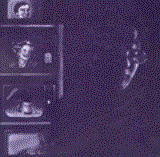 My bud Lukas, a WFMU Blogger and fellow KGLT DJ, has posted mp3s of the audio art classic Soap Opera Suite & Snake Oil Symphony (MP3s). These cut-up compositions are by Daniel Steven Crafts, before now available only on vinyl. A sample, “Soap Opera Suite I: The Essence of Melodrama” (5:10):
My bud Lukas, a WFMU Blogger and fellow KGLT DJ, has posted mp3s of the audio art classic Soap Opera Suite & Snake Oil Symphony (MP3s). These cut-up compositions are by Daniel Steven Crafts, before now available only on vinyl. A sample, “Soap Opera Suite I: The Essence of Melodrama” (5:10):
Sez Lukas: “In 1982, self-taught composer Daniel Steven Crafts released an album with two tape compositions, Soap Opera Suite and Snake Oil Symphony, on the Berkeley-based Lutra label. It is a pioneering work of found sound, and it perfectly captures the essence of TV in purely aural form. Or so I am told. I found a thoroughly used (and abused) copy on the shelves of WCBN one day, and it became one of my favorite secret weapons for weird audio collage shows and general freeform madness.”
 Crafts also collaborated with Adam Cornford on (Tellus #11: The Sound of Radio) “Fundamentals: Musical Preachers” (1:00 excerpt):
Crafts also collaborated with Adam Cornford on (Tellus #11: The Sound of Radio) “Fundamentals: Musical Preachers” (1:00 excerpt):
My kick ass guitar teacher has a brother who developed software that allows you to create loops and other sorts of musical feats without ever touching a computer. Amazingly cool. Introducing, the Amazing Rolo’s Wii Loop Machine!
I can’t wait to check it out. I already am imagining myself dancing around the kitchen while making music for radio, with just the click of a button.
Check out the Demo videos here.
The Amazing Rolo’s Wii Loop Machine, part 1:
Part 2:
PS–I have to say it’s a little eerie how much my guitar teacher and his brother look alike.PPS-And NPR passed on this guy when he applied for a Kroc fellowship. I can’t believe they let this genius slip through their fingers. Or wait, maybe I can.
 The 2007 Third Coast International Audio Festival ShortDocs competition theme is Dollar Storeys:
The 2007 Third Coast International Audio Festival ShortDocs competition theme is Dollar Storeys:
“Dollar Storeys is a public audio project that invites producers, artists, writers and radio fans of all backgrounds to submit finished audio stories clearly based on one of three specific dollar store items [pictured at 3rd Coast] and lasting 2:30-3:00 (min).”
The work of field-recordist extraordinaire Chris Watson (fmr Cabaret Voltaire) is on National Geographic Channel’s Galápagos web. (Click “Launch Site”; skip the opening video, use the lower-right audio controls.)
(Found at lissenup.)
Just when you thought you had the best job in the world, some gamers from Dark Sector have to come and one up you:
Another evolutionary video from spoken-weird artist Ernie Cline:
There’s also a flash-y version of Ernie’s piece. Lastly, an audio selection from EC’s spoken-word posted mp3s, “The Geek Wants Out” (NSFW):